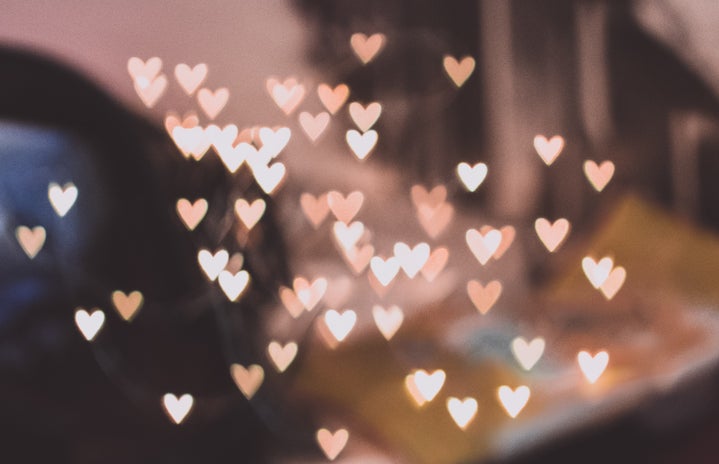One day in Turlington Plaza freshman year, I ran into a guy wearing a menorah sweater. He was tabling for our school’s Chabad center, a place I had been itching to stop by. At the time, I had no Jewish friends up at college, despite meeting so many Jews through various aspects of campus life. Yet I remained proud of my heritage, and I was really excited about the sweater, which he told me he found at Target.
I hopped on a bus the next day, only to find out that the local store was out of stock. Sensing my disappointment, a salesperson suggested the online store. Within hours, I looked eagerly at a virtual shopping cart, ready to call my grandmother and ask if I could use her Target card so that I’d get free shipping. I thought she’d find it as adorable as I did. Instead, she was livid.
“You are not buying that sweater as long as I’m around. I can’t let you wear something like that in Gainesville. You’ll be a walking target for anti-Semitism, a lot more obvious to the locals than a small Star of David around your neck or a sorority sweatshirt.”
I left the Target website in tears, and the sweater was left to my dreams.
I didn’t actually make it to Shabbat services at Chabad until the start of my sophomore year. On my first night there, I met a boy named Perry. He wore a kippah emblazoned with a Camp Ramah logo, with turquoise mesh that happened to match my hamsa necklace. Any boy at Shabbat dinner wore a kippah out of respect, regardless of whether or not he personally identified as religious. It wasn’t until a few days later when I realized that Perry — who would soon become my boyfriend — also wore one around campus throughout the week.
His favorite kippah was navy blue, and was a gift from his younger sister. It even had clips underneath to attach to his hair. He liked the constant reminder of a higher power above himself, watching over his deeds and protecting him from harm. “A lot of guys wear necklaces that show the girls they’re Jewish — so I thought, why not wear a kippah?”
I always thought it looked cute, but I didn’t always feel so comfortable about him wearing it.
One night, I waited outside of one of his exams with a bag full of cookies. It was all fun and games until I realized the room had two doors — how would I know which entrance to sit by? When one of the TAs walked outside for a break, I asked if he could convince my boyfriend to leave out of a particular side of the room.
“What does he look like?” the TA asked.
“Well, he’s tall and thin, with a head of brown hair. I think he’s wearing a maroon shirt.”
The TA wandered back inside for a bit, and then came back to me with one simple question.
“Is he Jewish?”
I knew it wasn’t meant offensively. However, I viewed Perry as a multifaceted individual, and I didn’t want anyone else reducing him to his religious identity.
My grandmother knew about Perry, but not about his kippah. I took most pictures of him at angles that hid the sides of his head, and carefully cropped or otherwise altered the ones where the blue still peeked out from his wavy locks. Over time, it only felt increasingly weird for me to be treating it like such a taboo. Judaism is a big deal to my boyfriend. There was no hiding this fact.
He planned to drive me home when Thanksgiving weekend rolled around. Grandma wanted to offer him food, and her specialty was pepperoni stromboli. On a mid-November night, I sat in my dorm’s kitchen, unsure of how to break the news about his dietary observance.
“He doesn’t eat pork,” I noted, with a shaky voice. “He keeps kosher.”
The pepperoni was subsequently swapped for spinach. The kippah, however, was still a secret. Perry agreed to take it off on my family’s doorstep. He understood that he would be walking into a household that was humble about its faith. My grandparents had raised me with love and acceptance, but I knew they’d be nervous as they learned more about my boyfriend’s religious fervor.
In the months to follow, I gradually took on more religious observance. I also amassed a collection of T-shirts from Chabad, Birthright and Perry’s own Camp Ramah collection (which I have indefinitely “borrowed” from). I had no discomfort with wearing these around campus, despite my grandmother’s prior warning.
Eventually, the truth came out regarding the back of my boyfriend’s head, as she questioned about it among all of his other religious practices. By that point, I had shifted from feeling weird about the kippah to a sense of pride. During a trip to Jerusalem, I even picked up a special one with an embroidered Gator logo, although Perry was more excited about the bag of kosher gummy candies when I presented him with his gifts.
Today, my feelings about Judaism are very mixed. On one hand, I enjoy learning more about my faith and having the opportunity to grow. On the other, some aspects of observance are a far cry from the more religiously liberal ways my family had tried to instill. It’s been a lot to adjust to, but I ultimately believe the benefits are worth it.
I am lucky to be on a campus where it is generally safe to be a Jew. However, my grandmother’s fears were realized the other week when a strange man wandered into Turlington wearing a handmade swastika armband. He offensively saluted one of my friends who, like my boyfriend, wears a kippah to class; he even confronted one of the rabbis at the Chabad center, where he was promptly told to leave. When the swastika-wearer made a second appearance in Turlington, a crowd of students gathered around him and chanted, “No more Nazis, never again!”
It was the first time in three years at UF that I felt threatened due to my Jewish identity. Still, that circle of students reminded me of our safety in numbers. Many of the males in the group donned kippot, including those who didn’t otherwise wear them outside of synagogue. While that day was a whirlwind of emotion for all of us, it was also one where we were reminded of our unity as a people. In the same plaza where a boy once stood in a menorah sweater, there now stood an entire brotherhood.
And through that same plaza, my boyfriend and I have walked to our classes in peace — occasionally with our hands held, but always with a kippah on his head.
Photo credit:
All photographs in this piece belong to the author, Valerie Berman.


